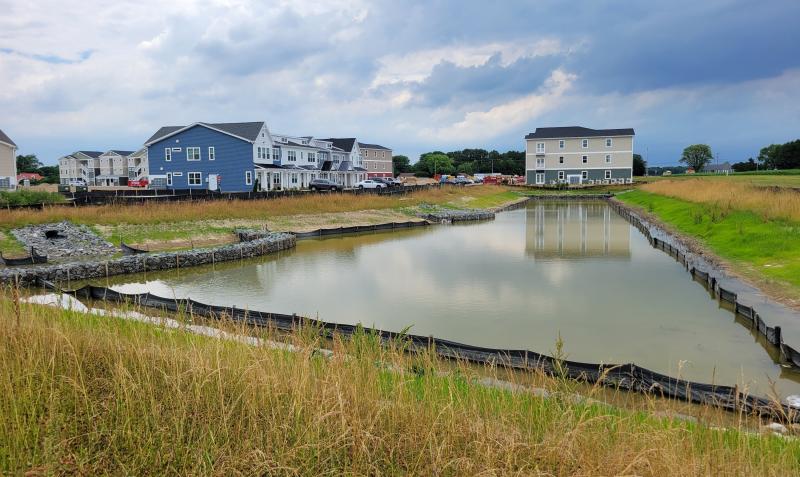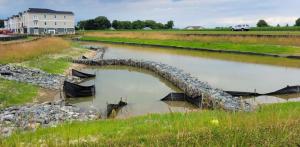Remember all that winter rain? It’s mostly dried up
Back in March, I wrote a column about how this past winter was a wet one. While it wasn’t going to go down as the wettest in Delaware history, it would be close. I think because I pointed it out, there has been very little rain over the past few months.
The original column ran in the March 8 edition. At the time, according to the Gazette’s precipitation gauge published in each edition, the area had seen 10.14 inches in 2024. Normal for the year, at the time, was 6.34. The peak in the difference between the two amounts appears to have been in early April, when the area had seen 13.99 inches to the normal of 9.89.
Since then, the gap has slowly closed and, as of last week, numbers have flipped in the other direction. According to the paper’s precipitation gauge, the flip took place in early June – 16.29 inches of actual to 16.72 inches for a normal amount.
Chris Hughes, a research associate for University of Delaware’s Center for Environmental Monitoring & Analysis, confirmed that April and May have been a bit below average. There’s still some variability depending on where a person is in the state, but for the most part, he said, it’s been pretty dry.
It could dry out even more now that 90-degree days could be coming, said Hughes. That’s the real concern, he said.
Looking to the rest of the summer, the extended forecast calls for above-average rainfall and above-average temperatures, because ocean waters are warmer than normal and larger weather patterns are transitioning to a La Niña phase, said Hughes. Those two reasons are why experts have released one of the highest hurricane activity forecasts he’s seen.
If there are a few days or a week of rainy, tropical weather, the rain totals could flip again, said Hughes.
Forebays in stormwater ponds can be complicated
Most of my water level observations have been based on a stormwater retention pond in Milton that was built for a new development. The pond features a series of structured rock formations near the stormwater outlets. I’ve seen rocks used in stormwater ponds before, but the ones in this pond are more noticeable than others – they look like miniature versions of the jetties at Herring Point in Cape Henlopen State Park.
I reached out to David Baird, Sussex County Conservation District coordinator, to see if there is a new approach to stormwater management. In short, there isn’t.
Baird said the rock structures are called forebays, and they’re not new. He said they’re standard on most ponds and serve the purpose of slowing the water down as it enters the pond, while also acting as a pre-treatment to allow some of the heavier or more coarse sediments to filter out prior to entering the main portion of the pond.
These are pronounced, said Baird, but the amount of rock needed varies from project to project based on the design and conditions of each site.
Joke of the Week
The Cape Henlopen School District’s final days of the school year were this week, which means summer is officially here in the Cape Region. It also means that it’s sunscreen season. Don’t forget your sunscreen, folks. As always, send jokes to cflood@capegazette.com
Q: What did the sunscreen say to the hat?
A: You go on ahead, I’ve got your back.
Chris Flood has been working for the Cape Gazette since early 2014. He currently covers Rehoboth Beach and Henlopen Acres, but has also covered Dewey Beach and the state government. He covers environmental stories, business stories, random stories on subjects he finds interesting and has a column called ‘Choppin’ Wood’ that runs every other week. Additionally, Chris moonlights as the company’s circulation manager, which primarily means fixing boxes during daylight hours that are jammed with coins, but sometimes means delivering papers in the middle of the night. He’s a graduate of the University of Maine and the Landing School of Boat Building & Design.





















































